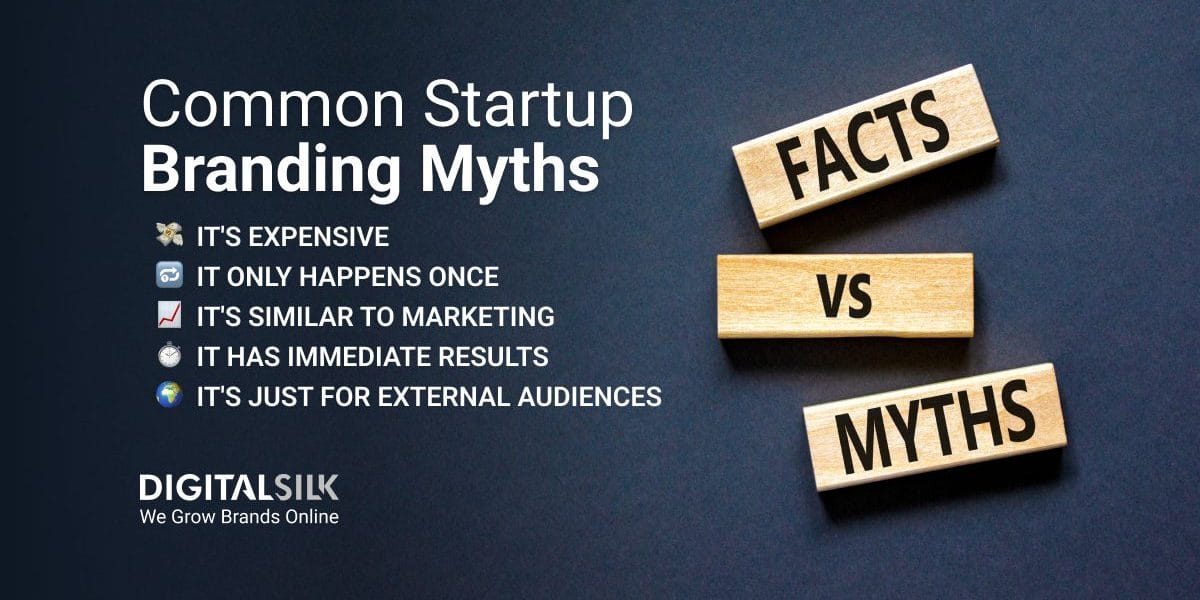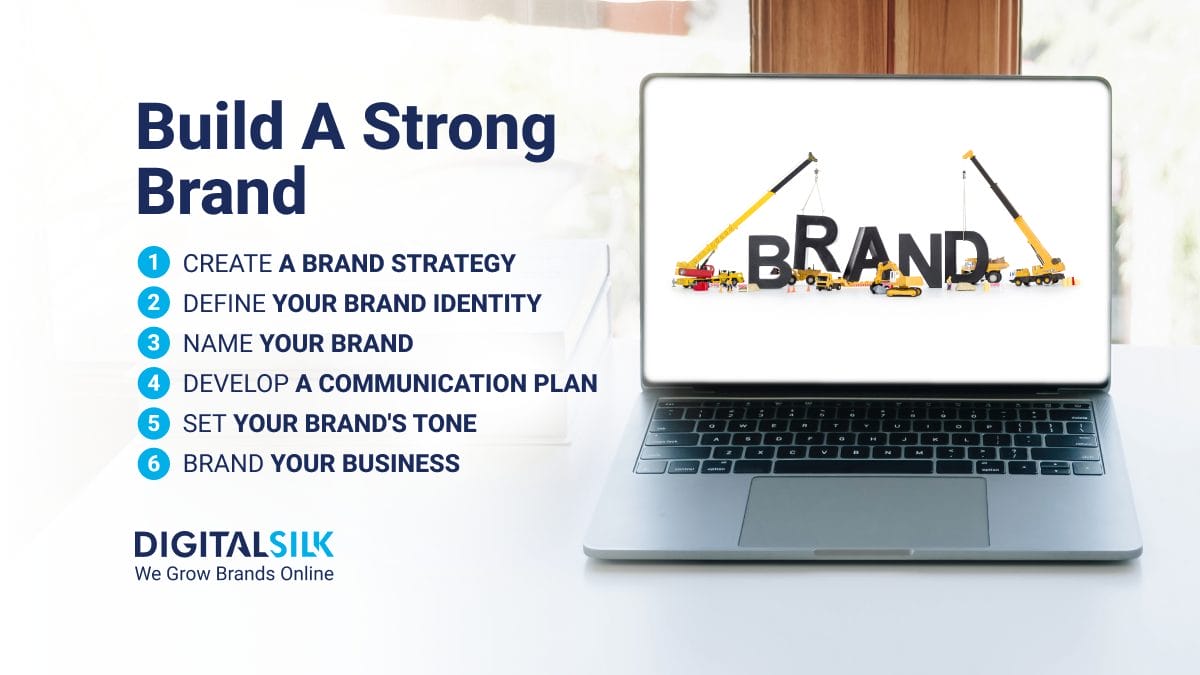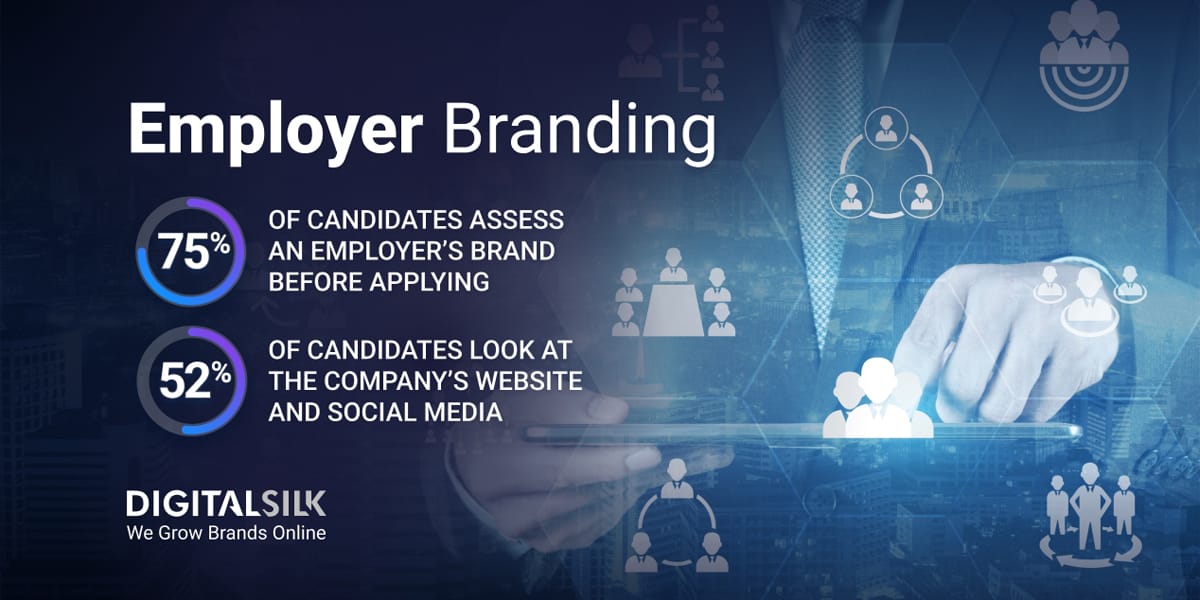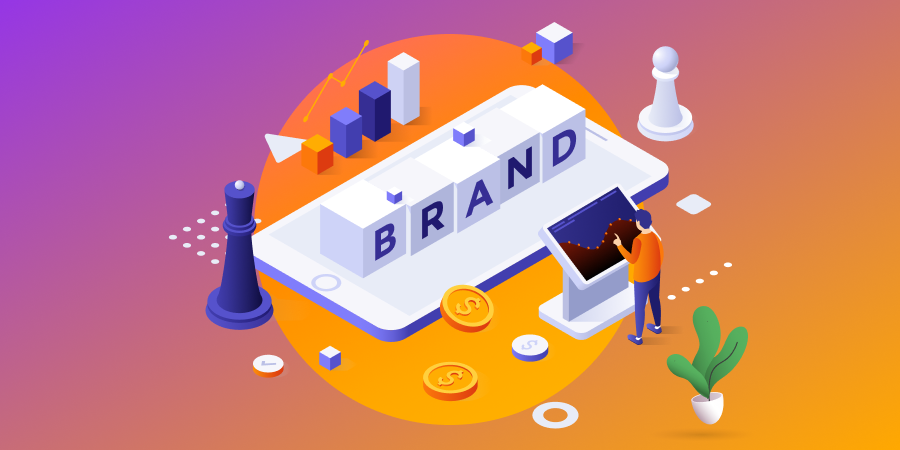At Digital Silk, we encounter startup branding myths every day.
While some may seem harmless, these branding misconceptions can damage your decision-making as a business owner.
They can also stop your brand from reaching its potential by leading you off course in your business’ important early stages.
That’s why we’ve compiled a list of the 10 most common startup branding myths we come across.
We’ll also debunk each myth to keep your project on track and ensure you consider the importance of branding solutions when growing your brand.
We deliver end-to-end branding solutions. Request a Quote
Myth 1. Branding Is Expensive
“Branding is too expensive for our budget,” is a phrase we hear all the time at Digital Silk.
After all, we all know of global soft drink brand Pepsi spending $1 million on its logo design back in 2009.
Pepsi’s astronomical branding budget may not be a myth, but it should by no means represent a branding norm.
Reality:
In truth, your branding projects can be scaled to fit any budget.
End-to-end branding services contain so many factors and elements that you can shape your project in the way that best fits your business requirements.
While full-service branding solutions can result in high prices, your company can cut prices by first focusing on your brand image with a logo design at a fraction of the price.
Branding should also be viewed as an investment, not a cost. By investing in building your brand value, you can deliver a higher return on investment (ROI).
A McKinsey study found that the world’s 40 strongest brands outperform the MSCI World – a global market benchmarking index – by 73% for shareholder returns.
Myth 2. Branding Is Meant To Please Everyone
It’s easy to be pulled into a branding strategy that is neither here nor there. In fact, the need to please everyone is one of the branding myths we see over and over at Digital Silk.
However, by aiming to please everyone your brand misses the opportunity to truly connect with your target audience.
Reality:
Branding isn’t about pleasing every potential customer or conforming to every marketer’s preference.
Instead, you should focus on your brand’s core identity and long-term goals, aiming to connect meaningfully with your specific target audience.
Take Wendy’s, for example.
The U.S.-based fast-food chain has a cheeky brand personality that it exercises mostly on its social media platforms like X.
The snarky jibes at competitors like McDonald’s likely won’t appeal to every customer segment, specifically Mickey D’s advocates and culinary traditionalists.
However, the brand voice remains consistent and memorable. It is also advocated on the channels that contain the largest proportion of potential customers that resonate with the unserious sense of humor.
Myth 3. Branding Only Happens Once
It can be tempting to believe that a one-time investment will build your brand into something big.
But like many aspects of life, both professional and personal, you need to invest time, money and effort into your branding initiatives for your startup to be successful.
After all, the saying Rome wasn’t built in a day exists for a reason.
Reality:
Customer behaviors and industries are always evolving. This means your brand needs to be on its toes too.
Whether a brand refresh or a complete overhaul, updating your brand strategy ensures it remains relevant and continues to appeal to customer values.
Burger King’s 2021 rebrand is a strong example of this.
In the seven years before its rebranding, revenues at the global fast-food chain had almost doubled from $1.06 billion to $1.81 billion.
Burger King could have stuck with a winning formula.
Instead, it chose a complete overhaul to meet evolving trends in design preferences and customer values.
Its new color palette and logo design are modifications of older 1969 and 1994 adaptations, leaning on growing themes of nostalgia headed by shows like Stranger Things.
Meanwhile, Burger King dropped the artificial colorings and preservatives from its Whopper burger.
By promoting this change on its product packaging and with wider messaging, the company has channeled into increasing desires for food transparency and healthy eating.
Myth 4. Branding Is The Same As Marketing
One of the most common branding misconceptions we hear is that branding is the same as marketing.
While branding and marketing are related, they are not equal.
Reality:
Branding refers to defining who you are as a business and what you stand for, while marketing relates to promoting and selling products or services.
In turn, the strategy, process and goals of branding and marketing differ from each other in the following ways:
- Strategy: Branding strategies focus on consistency to build brand identity, while marketing strategies are more flexible and evolving.
- Process: Branding is a long-term process that stems from a brand’s creation, while marketing is a short-term addition to promote individual elements of a brand.
- Goals: Branding aims to foster relationships through awareness and loyalty, while marketing specifically targets generating a response from customers through metrics like sales.
| Branding | Marketing | |
| Strategy | Consistent | Flexible |
| Process | Long-term | Short-term |
| Goals | Relationships | Sales |
This isn’t to say you shouldn’t measure the effectiveness of your brand. Regular assessment, brand audits and feedback collection are necessary to understand how your business is performing.
Using metrics such as brand awareness, customer loyalty and market share can offer valuable insights into your market positioning and industry authority.
Myth 5. Branding Is Only For Big Companies
The biggest brands with the largest budgets are often the ones we have the most exposure to. The average U.S. citizen will encounter Nike more than a boutique footwear startup in the U.K., for example.
This gives us the false impression that branding is only for big brands.
Reality:
Every business, regardless of size, can benefit from branding.
Branding solutions are crucial in creating and promoting an identity that resonates with your target audience and their values.
After all, 63% of global consumers buy or advocate for brands based on their values and beliefs.
Some important steps your startup can take, regardless of size, include:
- Brand foundation: Define your brand’s purpose, values, mission and UVPs to act as the backbone of your brand identity.
- Brand naming: Use market research and feedback, either primary or via tools like SurveyMonkey, to choose a name that reflects your identity and is easy to remember.
- Brand positioning: Determine how you want your brand to be perceived and what problems your brand will solve in comparison to your competitors.
- Logo design: Whether using external agencies and freelancers, AI logo generators or in-house designers, craft a simple, scalable logo that represents your brand identity.
- Brand book and style guide design: Develop a set of guidelines that will shape your future branding materials and actions taken by your employees, no matter how many you have.
Myth 6. Branding Guarantees Immediate Results
As a startup, it can be frustrating to make investments and not see immediate returns.
However, the aim of branding is not to achieve quick wins but prolonged results.
Some of the most common branding myths stem from those looking for shortcuts to their company’s branding initiatives.
Reality:
Branding is a long-term strategy, making immediate boosts in sales rare for all-sized businesses.
The true value is instead seen in sustained growth and customer loyalty over time.
For example, 82% of consumers worldwide claim that their favorite brand “strives to build a relationship” with them and 92% say that their favorite brand “provides a consistent experience, regardless of where I interact with it.”
Neither of these outcomes can be achieved quickly as they require your startup brand to foster true connections with your audience.
However, once reached, you can receive the benefits of brand loyalty, highlighted by this fact: 69% of Gen Z and 70% of Millennials will go out of their way to shop at their favorite brand if the nearest location was closed.
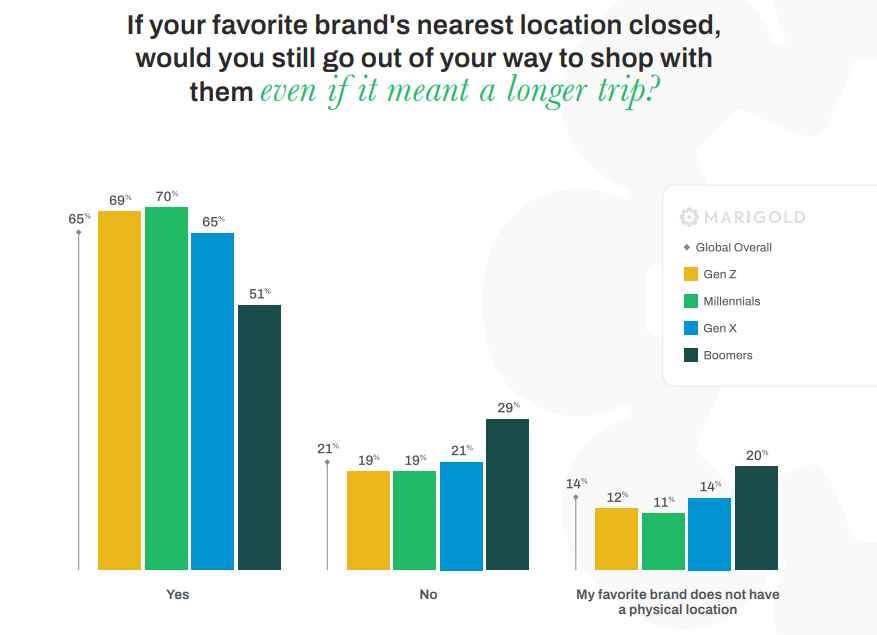
Myth 7. Branding Is Only About Having A Great Logo
Three in four U.S. customers think that the look and feel of a logo can make or break a company.
This makes having a great logo a central element for every startup brand, but it doesn’t correlate to branding only involving logo design.
Reality:
Branding encompasses much more than just visual elements like your logo design.
To build brand equity and value, your startup brand needs to focus on the entire customer experience.
But this is easier said than done.
While 81% of brands believe they have a deep understanding of their customers, only 46% of global customers agree.
Instead of relying solely on a high-quality logo, your branding strategy needs to take a more holistic approach.
This approach can include delivering top-level solutions and customer service, driving recognition through on-brand collateral and displaying your core values through consistent messaging.
To achieve this, you can analyze your target audience to identify pain points and interests, create a compelling brand story to align with your goals and and adapt your strategy to different channels and platforms.
Your branding strategy should reflect your core values and messaging, improve customer experience and create lasting emotional connections with audiences.
Neglecting these elements can result in a disjointed brand presence that fails to appeal to your target audience and yields unfavorable results.
Myth 8. Only B2C Products & Services Need Branding
One of the branding misconceptions we encounter when working with business-to-business (B2B) companies is that only business-to-consumer (B2C) products and services need branding solutions.
The claim stems from the fact that B2B audiences are often much smaller and may not need to be a household name in the public to succeed.
Reality:
Branding is equally crucial for B2B as it is for B2C.
Just like B2C audiences, businesses need to trust your brand before making purchase decisions and becoming loyal buyers.
That’s why 92.4% of businesses are more likely to buy a product having read a trusted review.
In turn, B2B branding establishes brand reputation, credibility and authority to build trust in your target audience.
It also helps your business communicate your unique values and differentiate your brand in competitive markets to foster long-term client relationships.
Myth 9. Branding Is Just For External Audiences
Brand touchpoints are often seen as outward facing; think customer service teams, ad campaign messaging or packaging designs.
This mindset can cause one of the more dangerous myths about branding, leading startups to neglect the power of employees in building their brand and promoting their brand identity.
Reality:
Effective branding also targets internal audiences, including employees and stakeholders.
Today, employer branding is an important step to take for all businesses as the modern workforce is flexible; over half of global employees were actively or passively searching for new jobs.
Focusing on employer branding means attracting and retaining the best talent, as you can make sure workers see your company values, benefits and environment as an appealing career option.
A key element of employer branding is defining your employer value proposition (EVP) and sticking to it.
Use social media, blog content, email marketing and so on to show how your company lives your values, ensuring your actions are a physical representation of your goals and values.
Myth 10. Branding Is Not As Important As Product Quality
The last of our branding myths is that branding is not as important as product quality.
A good idea and a high-quality execution of that idea can kickstart your startup into life, but it’s not enough to only have a high-quality product or service.
Reality:
While product quality is crucial, branding is what communicates the value of your products to consumers.
Strong branding can drive associations you wish to connect to your company.
Take the luxury fashion house Chanel, for example.
The brand delivers high-quality clothing, accessories, jewelry, fragrances and beauty products. However, its brand image and perceptions are what separate Chanel from less successful names in luxury retail.
Chanel uses a refined color palette of white, black, beige and pink while investing in high-quality imagery to promote an aspirational visual identity of glamor and elegance.
The brand also leans on an illustrious history and iconic status by partnering with global celebrities, like Margot Robbie shown in the advert above, to combine its timeless designs with modern trends.
We deliver end-to-end branding solutions. Request a Quote
Dispel The Branding Myths & Experience Top Solutions With Digital Silk
Branding myths can easily make their way into public discourse and negatively impact your decisions.
It’s vital to cut the fact from fiction when crafting a successful brand strategy that will lead to measurable growth.
At Digital Silk, our highly skilled branding team uses data-driven insights, decades of industry experience and innovative decision making to steer clear of branding myths and grow your brand.
As a full-service branding and web design company, we provide end-to-end solutions that include:
- Brand foundation
- Brand naming
- Logo design
- Brand strategy
- Digital branding
- Custom web design and development
- Digital marketing
We also give each of our clients with a dedicated digital strategist to ensure we provide you with:
- Project ownership
- Total transparency
- Measurable results
Have a startup branding project?
Contact us, reach out via (800) 206-9413 or fill the Request a Quote form below to schedule a free, custom consultation.
Startup Branding FAQs
Branding is necessary for businesses of all sizes, including startups because it helps establish their unique identity. With a well-structured strategy, you can increase customer loyalty, drive organic traffic and improve market recognition.
While some branding efforts can be costly, their long-term ROI, engagement and conversion implications are a worthwhile investment. You can start with foundational elements like brand messaging, visual identity and core values and expand as your business grows.
Even with valuable products or services, you may struggle to establish unique market positioning and grow customer loyalty without a consistent and distinct brand. Branding effectively communicates your value proposition, builds trust and sets you apart from competitors.
Establishing brand guidelines and assets can significantly impact early-stage growth, customer acquisition and retention. When you plan ahead of launch, you can attract the right audiences, set the direction for your brand and create a cohesive customer experience from the start.
No, branding and marketing are two distinct yet interconnected elements. Branding defines your identity and core values while marketing defines research-backed strategies to promote your products and services.
Not all rebranding efforts require a complete overhaul. You can update certain elements that align better with your current goals and audience and retain other aspects for consistency and recognition.
"*" indicates required fields


